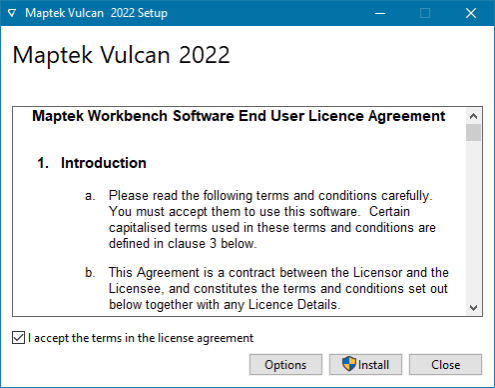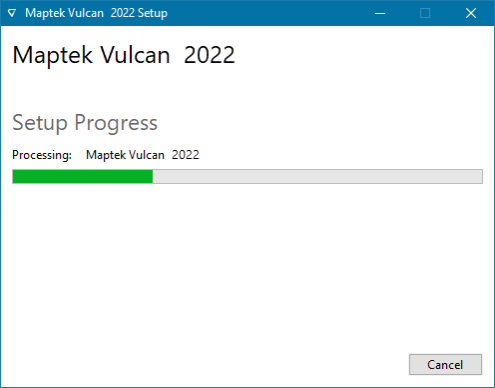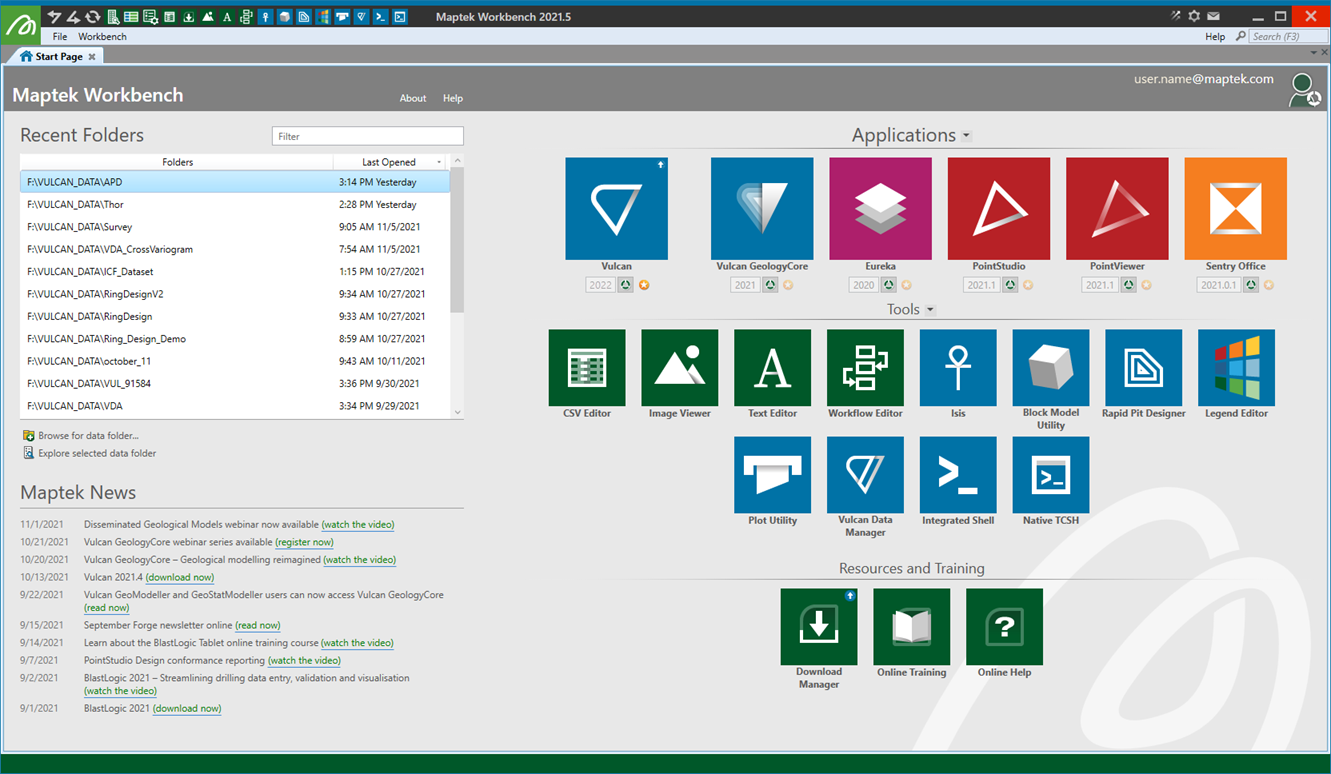Vulcan Quick Start Guide
System requirements
These are the suggested minimum system requirements. Please follow the recommended specifications for maximum performance for large datasets and high-resolution imagery.
| Item | Specifications |
| Processor |
64-bit Intel or AMD CPU i7 series equivalent or higher |
| Operating System | Microsoft Windows® 10 x64bit |
| Internet connectivity | Recommended |
| RAM | 32 GB or more |
| Storage |
1 TB SSD or 7200 rpm HDD for local data storage Gigabit LAN or faster for larger remote storage 10 GB total disk space for installation 4 GB free disk space for swap files |
| Graphics Card |
OpenGL 3.3 or later compliant dedicated video card (It is recommended to obtain the latest graphics drivers from the machine manufacturer's website.) 4 GB Video RAM or more NVIDIA GeForce GTX or Quadro* models. |
| Display |
1920 x 1080 resolution or higher (Dual monitors recommended) All screens should be set to the same resolution for best experience. |
| Peripherals | 3 button scroll-wheel mouse |
Note: * Only Quadro supports running Vulcan over Remote Desktop
For applicable Quadro Cards - Global Presets - default to be set as “3D App Game Development”
Bookmark our System Requirements to ensure you are referencing the latest information on recommended specifications.
Enabling 8dot3 names
Vulcan tcsh requires 8dot3 names enabled in the Windows file system. To check the current setting and enable it:
-
Run the command (as Admin)
fsutil 8dot3name query C:to check the state on volume C: if that's where Vulcan is installed. However, you can check the state on any volume by changing the volume drive. It is likely to be 1 if this problem is encountered. -
Run the command (as Admin)
fsutil 8dot3name set C: 0to enable 8dot3 names on volume C:. However, you can set it on any volume by changing the volume drive. -
Run the command (as Admin)
fsutil 8dot3name set 0to enable 8dot3 names on all volumes. This is the recommended setting for Vulcan.
Note: From Vulcan 12.0.2 onwards, the installer does this automatically.
Maptek Workbench
The Maptek Workbench is delivered as a single installation with Maptek software applications Vulcan, PointStudio, Eureka, Evolution,and BlastLogic. The dynamic platform allows users to customise their workspace to suit work patterns, and enables enhanced workflows and data sharing between Maptek products.
Vulcan Installation
The GUI installation is the default installation mode for Vulcan. The installer checks in the background for software that needs to be installed without prompting on the screen. However, you can see the installation progress through the status bar.
-
Open the installer that comes with your licence purchase. For first-time installations, it’s best recommended to use the
.exeinstaller. -
A dialog appears asking permission to allow the program to make changes to the computer. Click Yes to continue.
-
Read the licence agreement. If you agree to the terms of the licence agreement, check I accept the terms in the license agreement.

Note: The Options button allows you to change the installation folder. However, this is optional. If you need to install Vulcan in a different folder, browse a location and click OK.
-
Click Install to begin the installation. The installer automatically checks for all the updates and installs the bundled versions of Vulcan, Workbench, MSP, MAP, and all prerequisites.

-
Once the installation is finished, you might be prompted to restart the computer. A system restart can be helpful but not necessarily required if you already have Vulcan installed on your system.
Configuring Vulcan
Once Vulcan is installed, you will need to configure several settings before running the software.
If this is the first installation of Vulcan, set the following environment variables. If you have an existing version of Vulcan, you may need to copy the etc/resources directory from the existing Vulcan version prior to installing Vulcan. Once finished, you can run the Vulcan application.
TEMP and TMP
These environment variables and directories are used by Vulcan to create the temporary files needed during the program's execution and should be set as system variables.
HOME
This variable points to your home directory. You are prompted for your home directory when running the installation procedure.
Licensing
There are three types of Vulcan licences:
-
Node-locked—A licence key and matching licence file exist on a local machine which has Vulcan installed.
-
Floating—A licence key and matching licence file exist on a server machine. Local machines running Vulcan software access the licence on the floating licence server.
-
Maptek Account Licence— Provides online access to Maptek software applications with borrowing and fail-safe modes for working offline.
Running Vulcan
Once all settings have been configured, you can run Vulcan from the desktop or start menu.
-
For the first time installation, you will be prompted with an option to set your Vulcan Home Directory.
-
Then sign in to your Maptek Account and choose a licence that comes with your purchase.
-
On the Maptek Workbench dashboard, click on the Vulcan icon.

-
Select a data folder and then set up project details.
-
After the project is launched, supply a design database (
dgd.isis) to start using Vulcan.
Further information is available in the Vulcan Installation Guide.

